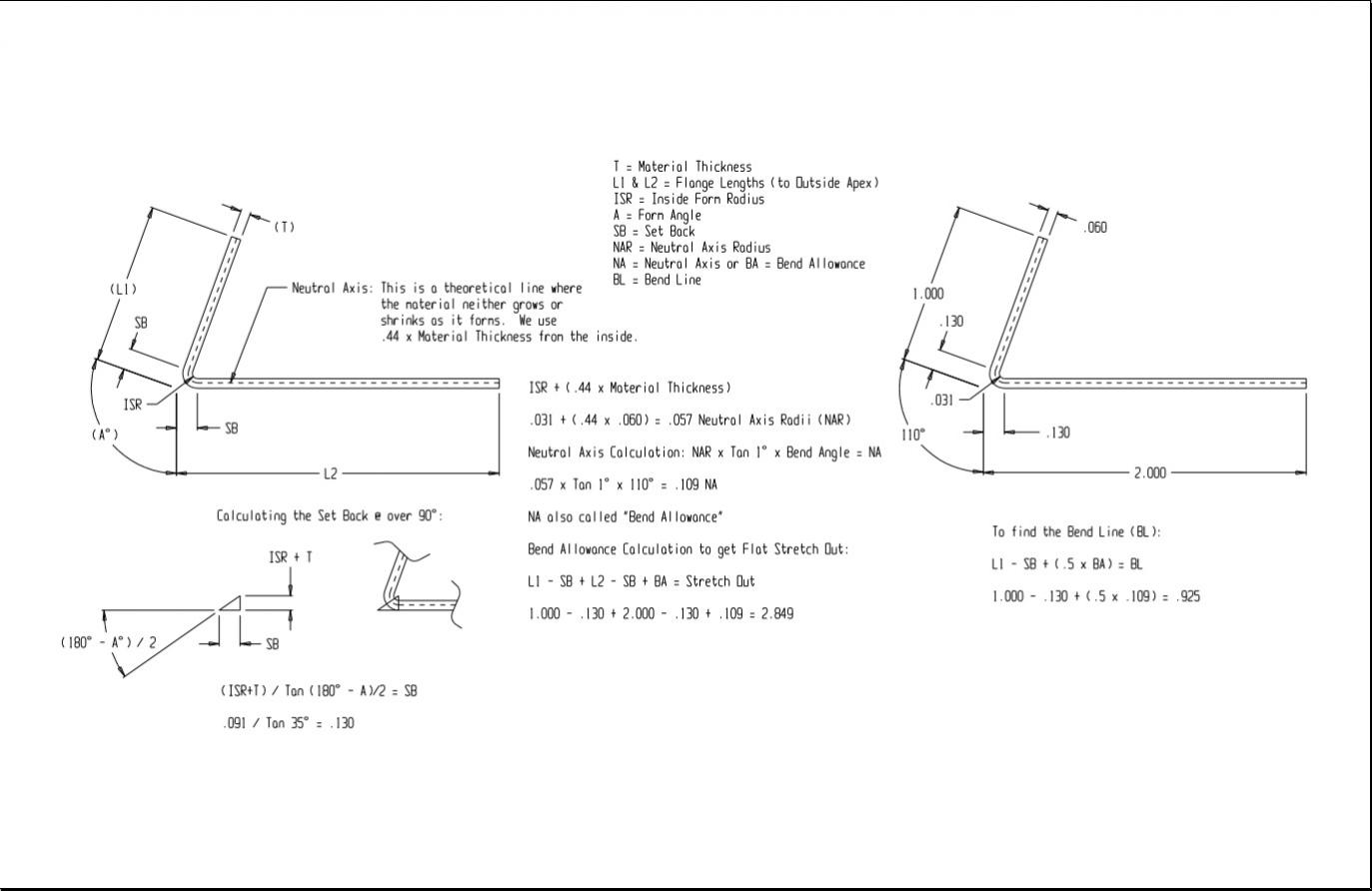August 29 2020.
Bend deduction sheet metal example.
Childress last modified date.
The bend deduction of means that the material is expected to stretch by that amount during the course of bending.
In order to develop the flat pattern we will subtract 293 from 5 to arrive at 4 707.
The bend allowance and bend deduction are two measures that relate the bent length of a piece of sheet metal to the flat length.
Should be subtracted from the flat pattern so the formed part arrives at the desired dimensions.
This is simulated on the part shown above by the section shown in red.
This page also includes a link to a on line sheet metal bend allowance calculator.
Also known as press braking flanging die bending folding and edging this method is used to deform a material to an angular shape.
The force must exceed the material s yield strength to achieve a plastic deformation.
We will start by calculating the bend allowance.
The flatten length of the parts that are lf equals d1 plus d2 minus the bend deduction.
In our example below a part with flange lengths of 2 and 3 with an inside radius of 250 at 90 will have a total length of 5.
This is done through the application of force on a workpiece.
When we calculate the bend deduction we find that it equals 293.
Therefore the bend allowance added to the flange lengths is equal to the total flat.
Figure 2 illustrates the sheet that is bent with the bend angle of 90 degrees.
Another method that solidworks uses is the bend deduction method.
Understanding the bend allowance and consequently the bend deduction of a part is a crucial first step to understanding how sheet metal parts are fabricated.
Sheet metal calculator bend allowance equations and calculator.
In order to develop the flat pattern we will subtract 293 from 5 to arrive at 4 707.
Bend allowance is a measure of how much extra material is required to accommodate a bend in sheet metal this is a function of the bend angle bend radius thickness of the material and a variable called the k factor bend allowances vary based on the angle of the bend the type and thickness of the material and the method used to create the.
The following illustration shows the equation calculation for determining the bend allowance when forming sheet metal.
Bending is one of the most common sheet metal fabrication operations.
The formula is as follows.
Lf d1 d2 bd.
In the example below the part has flange lengths of 2 and 3 with an inside radius of 250 at 90 will have a length of 5.
As with bend allowance bend deduction comes from the same sources tables and manual testing.
When the sheet metal is put through the process of bending the metal around the bend is deformed and stretched.
The bend allowance describes the length of the neutral axis between the bend lines or in other words the arc length of the bend.
When the bend deduction is calculated we find that it equals 293 in length.
Most sheet metal materials will conform to the calculations.

